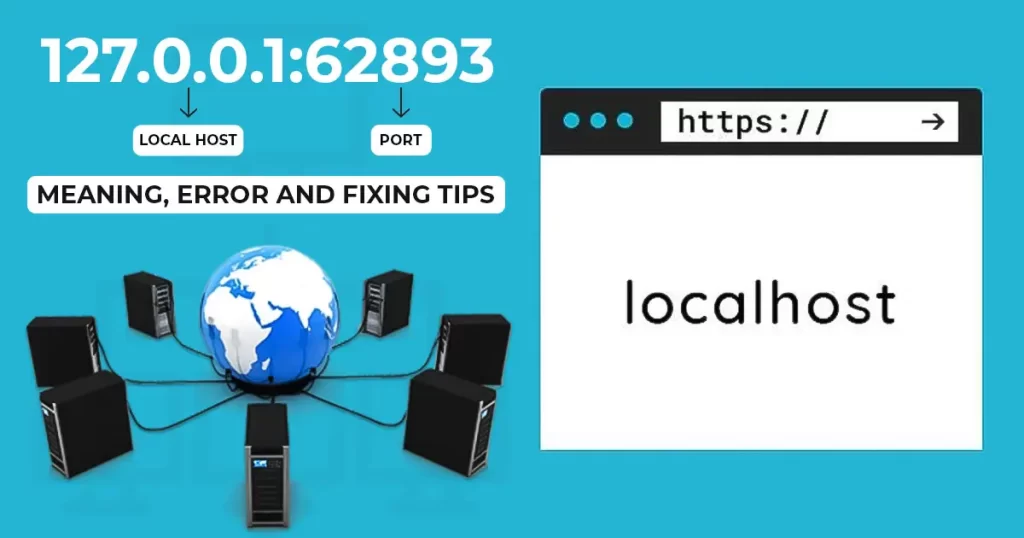In the realm of computer networks and internet communications, certain technical details often hold significant importance for understanding how systems interact. One such detail is the IP address 127.0.0.1, commonly known as the loopback address, combined with a specific port number such as 62893. This article delves into what these elements signify, their functionalities, and how they contribute to the internal operations of a computer system.
Understanding IP Address 127.0.0.1
1. The Loopback Address
- Definition: The IP address
127.0.0.1is known as the loopback address. It is used by a computer to communicate with itself. - Purpose: This address is used for testing and troubleshooting network applications without requiring a physical network connection. It helps in verifying that the network stack on the local machine is functioning correctly.
2. Address Range
- 127.0.0.0/8: The
127.0.0.1address is part of the127.0.0.0/8address block, which includes all IP addresses from127.0.0.1to127.255.255.255. All addresses in this range are loopback addresses.
3. Common Uses
- Local Testing: Developers use this address to test software applications and network services without sending data over a network.
- Diagnostic Tool: It helps in diagnosing network issues by allowing the user to check the local network interface.
Exploring Port 62893
1. What is a Port Number?
- Definition: A port number is a numerical identifier used to specify a particular process or service on a computer within a network. It helps in directing incoming and outgoing network traffic to the appropriate applications.
2. Port Number Range
- Well-Known Ports (0-1023): Reserved for common protocols such as HTTP (80) and FTP (21).
- Registered Ports (1024-49151): Used by applications that are not well-known but are registered with the Internet Assigned Numbers Authority (IANA).
- Dynamic or Private Ports (49152-65535): Often used for ephemeral connections and dynamic allocation by operating systems.
3. Port 62893 Specifics
- Dynamic Use: Port
62893falls within the dynamic or private port range. It is not associated with a specific service but can be used by applications for ephemeral connections or temporary communication. - Application Context: This port number might be used by various applications or services on a local machine for temporary communication or testing purposes.
How They Work Together
1. Local Communication
- Loopback Address Interaction: When an application communicates with
127.0.0.1on port62893, it is sending data to itself. This is useful for testing services like web servers, databases, or any networked application without involving external networks. - Example: A developer running a web server on
127.0.0.1:62893can test their server locally by accessinghttp://127.0.0.1:62893from the same machine.
2. Debugging and Testing
- Network Stack Testing: The loopback address and specific port combinations allow for testing and debugging of network software and services. It ensures that the software can handle network operations without needing an external network.
3. Security Considerations
- Local Only: Communications to
127.0.0.1are local and do not reach the external network. This limits the exposure to external threats but does not negate the need for secure coding practices. - Port Conflicts: While using dynamic ports, ensure that the chosen port does not conflict with other local applications or services.
Practical Applications
1. Software Development
- Testing Environments: Developers use loopback addresses and specific ports for creating isolated testing environments. This helps in verifying the functionality of networked applications before deploying them to a production environment.
2. Network Troubleshooting
- Diagnostics: Network administrators and IT professionals use the loopback address to diagnose network issues, check configurations, and ensure that local services are functioning properly.
3. Learning and Training
- Educational Purposes: The loopback address and port usage are fundamental concepts in networking education. Understanding these principles is crucial for anyone studying computer networks and system administration.
How to Access and Use
1. Accessing Services
- Web Browsers: Access local services by typing
http://127.0.0.1:62893into a web browser if a web server is running on that port. - Command Line Tools: Use tools like
curlortelnetto test connections to127.0.0.1on specific ports.
2. Configuring Applications
- Application Settings: Configure applications to use
127.0.0.1and specific ports for local communication and testing. Ensure that no other services are using the same port to avoid conflicts.
3. Monitoring Network Traffic
- Network Analysis Tools: Use network monitoring tools to analyze traffic on
127.0.0.1and specific ports to debug and troubleshoot issues.
Conclusion
127.0.0.1:62893 represents an internal communication channel within your computer, utilizing the loopback address and a dynamic port number. This setup is crucial for local testing, debugging, and developing networked applications. Understanding how this address and port work together enhances your ability to manage and troubleshoot network-related tasks effectively. Whether you’re a developer, network administrator, or just curious about network operations, grasping these concepts is essential for effective computer and network management.


